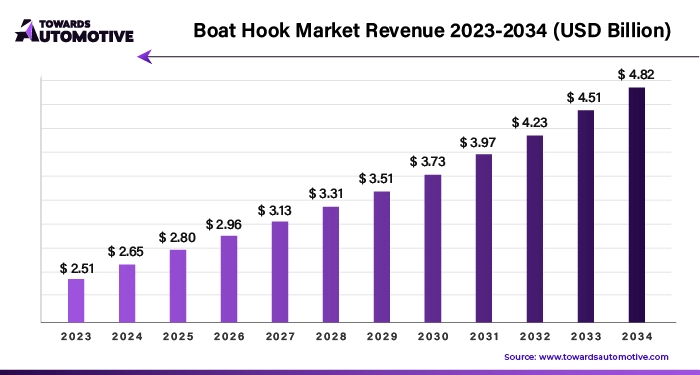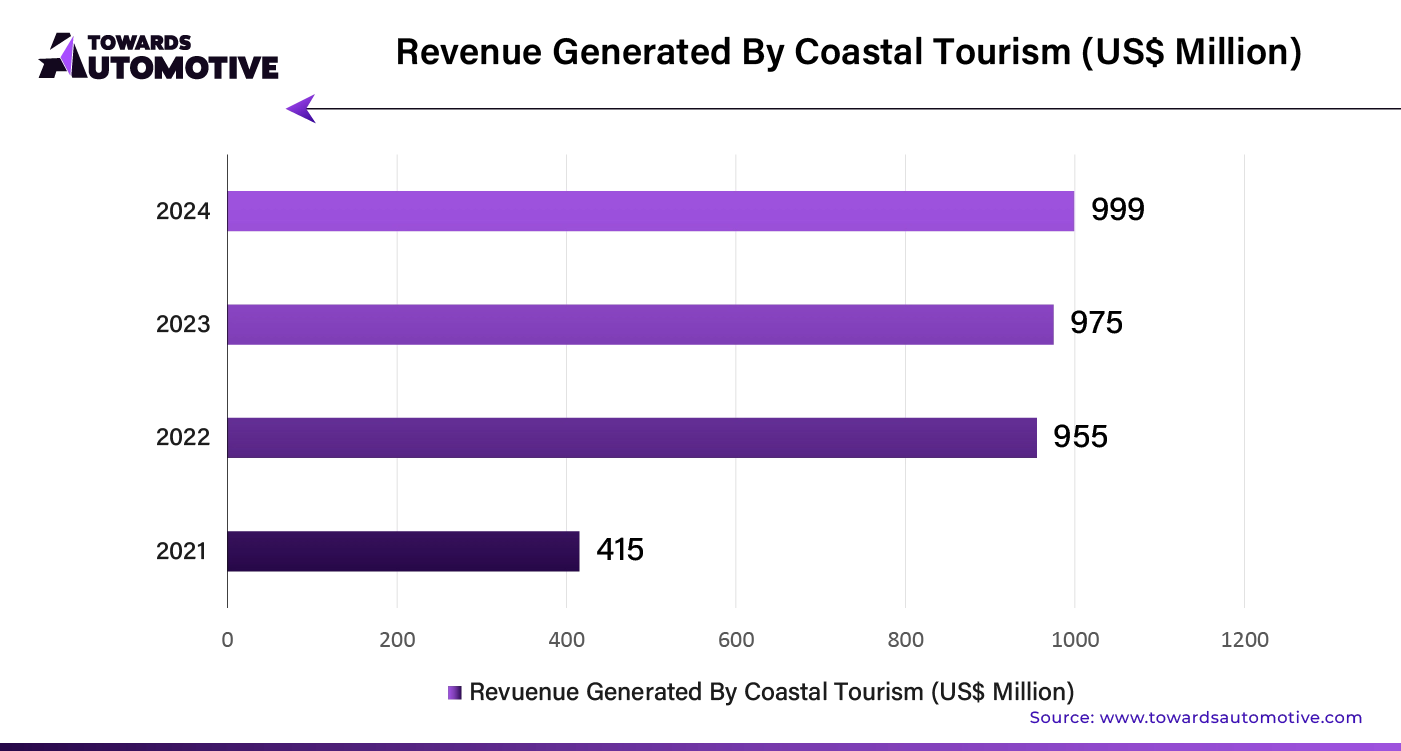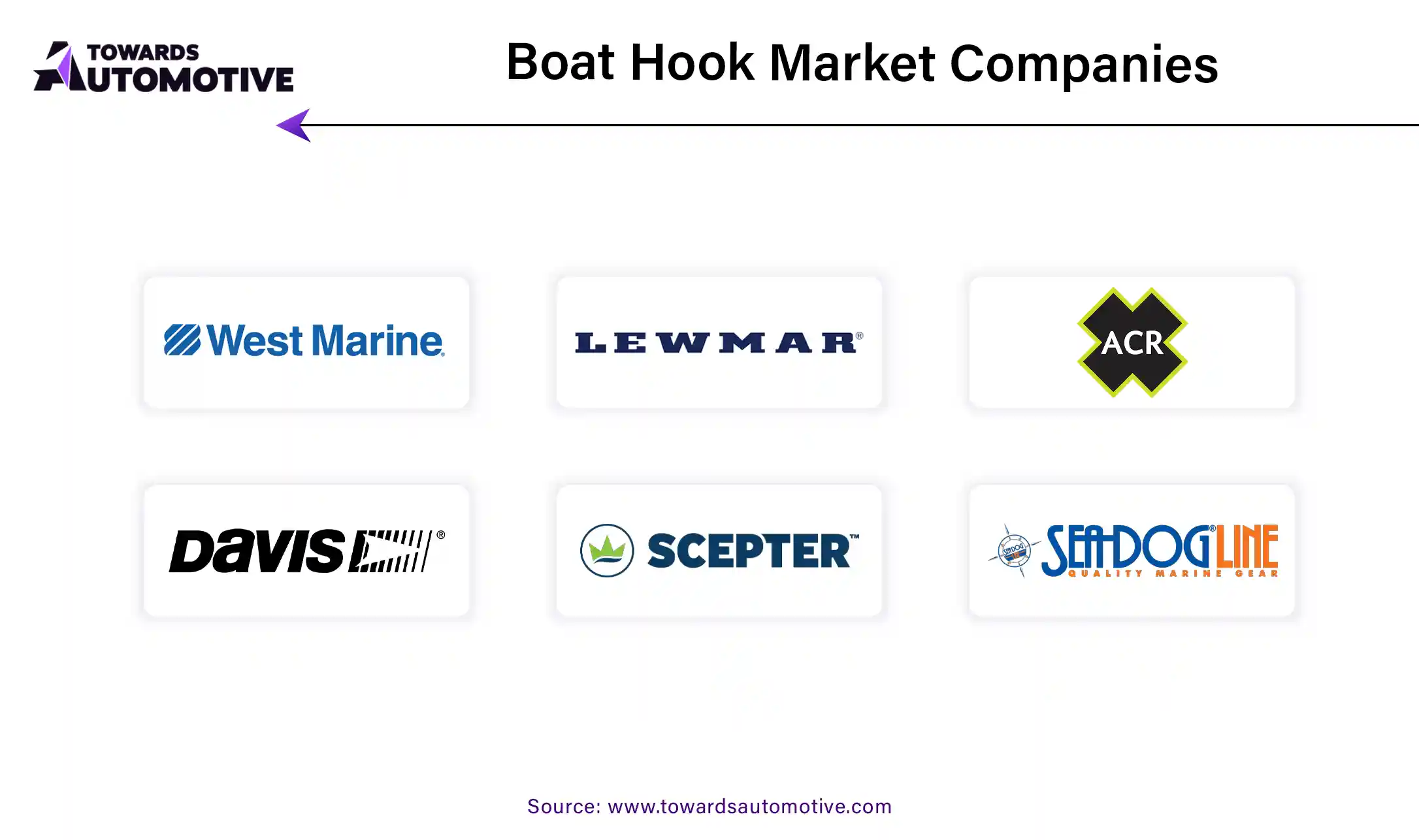April 2025
The global boat hook market is expected to grow from USD 2.80 billion in 2025 to USD 4.82 billion by 2034, with a CAGR of 5.7% throughout the forecast period from 2025 to 2034.

Unlock Infinite Advantages: Subscribe to Annual Membership
The growing popularity of coastal tourism and the surge in adventure and water sports activities have significantly heightened the need for stringent safety measures and reliable equipment. This trend is notably influencing the demand for essential boating accessories, such as boat hooks, which play a crucial role in ensuring safety and efficiency on the water. The automotive market valued at USD 4,070.19 billion in 2023, is experiencing growth and is projected to surpass USD 6,678.28 billion by 2032, with a significant CAGR of over 5.66%.
For instance,

As millennials increasingly engage in sailing, yachting, and power boating, there is a corresponding rise in the demand for high-quality boating accessories. This trend is expected to drive the market for boat hooks, which are vital for various boating operations. These accessories are essential not only for safety but also for the efficient handling of boats and cargo.
For instance,
Government Initiatives and Investments
Governments worldwide are recognizing the importance of maritime safety and are making substantial investments in maritime surveillance, coast guards, disaster recovery systems, and lifeguard services. For example, the Government of India has recently launched the Swadesh Darshan scheme under the Ministry of Tourism, aimed at promoting coastal and marine tourism. Such initiatives are likely to enforce stringent safety norms, which will further increase the demand for reliable boating equipment, including boat hooks.
For instance,
Growth in Seaborne Trade and Cargo Handling
The rise in seaborne trade and international cargo operations is driving the need for efficient cargo handling tools. Boat hooks are indispensable for loading and unloading operations, and with the expected growth in global trade, their demand is projected to rise significantly. The market is anticipated to experience substantial growth, with a projected value increase of approximately 1.8 times by 2034.
Innovations and Technological Advancements
Recent advancements in hook design are enhancing their functionality and safety features. Innovations such as telescopic and floating models are making boat hooks more versatile and user-friendly. These improvements simplify tasks such as attaching lines to boat cleats and retrieving objects from the water, thus enriching the overall boating experience.
Material Preferences
Different materials used in boat hooks offer distinct advantages. Stainless steel hooks are highly favored for their durability, corrosion resistance, and reliability in marine environments. Copper hooks are chosen for their corrosion resistance and aesthetic appeal, particularly in decorative applications. Plastic hooks, known for their affordability and rust resistance, are also witnessing growing demand.
Artificial Intelligence (AI) is transforming various industries, and the boat hook market is no exception. By integrating AI technologies, the market is set to experience substantial growth and innovation. AI can enhance the boat hook market by improving product design, functionality, and customer experience.
AI-driven analytics and machine learning algorithms allow manufacturers to understand consumer preferences and trends with unprecedented accuracy. This insight enables the development of boat hooks that are more ergonomic, durable, and effective, tailored to specific user needs. Additionally, AI-powered automation in manufacturing processes boosts efficiency and reduces production costs, leading to more competitively priced products.
Furthermore, AI enhances safety and usability through smart features such as automated docking assistance and real-time monitoring systems. These advancements increase the appeal of boat hooks, making them more attractive to both recreational boaters and professionals.
Overall, the integration of AI in the boat hook market fosters innovation, optimizes production, and elevates user experience, driving growth and positioning the market for future success.
The supply chain in the boat hook market operates through a multi-step process that ensures these essential maritime tools reach consumers efficiently. Initially, raw materials such as metals and durable plastics are sourced from suppliers. These materials are then transported to manufacturing facilities where they are crafted into boat hooks. During this stage, quality control is crucial to ensure that the final products meet industry standards and customer expectations.
Once manufactured, boat hooks are packaged and distributed to wholesalers and retailers. Distribution channels include both physical stores and online platforms, catering to a wide range of customer needs. Effective logistics are vital to manage inventory levels and reduce lead times, ensuring that products are readily available to end-users.
Supply chain efficiency is further enhanced through partnerships with reliable shipping and logistics providers. These partners handle the transportation of boat hooks from manufacturers to distributors and, ultimately, to consumers. The entire process is supported by robust tracking systems that monitor inventory, manage orders, and address any supply chain disruptions promptly. By maintaining a streamlined supply chain, the boat hook market can deliver high-quality products to maritime enthusiasts and professionals alike.
The boat hook market thrives on various essential components and industry contributions that enhance its ecosystem. At its core, a boat hook typically comprises a long, sturdy handle and a hook or claw at one end, designed for reaching, retrieving, and maneuvering objects around boats. The handle is often made from materials like aluminum, fiberglass, or wood, offering durability and ease of use. The hook itself may be constructed from stainless steel or other corrosion-resistant metals to withstand marine environments.
Companies across the market contribute in diverse ways. Manufacturers focus on innovating materials and designs to improve functionality and durability. For instance, firms may develop ergonomic handles or modular hooks to cater to different boating needs. Suppliers play a crucial role by ensuring a steady flow of high-quality raw materials, such as marine-grade metals and composites. Retailers and distributors bridge the gap between manufacturers and end-users, offering a range of boat hooks through physical stores and online platforms.
Additionally, marine equipment companies often incorporate boat hooks into broader product lines, bundling them with other essential boating tools. This collaborative ecosystem ensures that boat hooks remain a vital, efficient tool for boating enthusiasts and professionals alike.
Surge in Consumer Spending Drives Boat Hook Demand
Consumer spending on recreational water activities such as motor boating, yachting, and sailing has seen a significant increase. Boat hooks, essential for safe and efficient boating operations, are becoming indispensable accessories in this trend. The rise in consumer investment in these activities is expected to substantially boost the demand for boat hooks, as they are critical for docking, mooring, and retrieving items from the water.
According to data from Visa, spending on leisure activities as a proportion of total consumer spending rose from 10% to approximately 14% in 2023. Additionally, travel spending has surged by 72% over the past decade. These shifts in consumer preferences are expected to further accelerate the growth of marine tourism and recreational boating.
Marine Tourism Boom Creates New Opportunities
The booming marine tourism sector is driving increased demand for essential boating accessories. As more consumers invest in personal boats for activities such as fishing, sailing, and water sports, the need for boat hooks has grown. This trend became particularly pronounced following the COVID-19 pandemic, which led to a notable rise in boat sales and, consequently, an increased demand for hooks.
The National Marine Manufacturers Association (NMMA) reports that the U.S. recreational boating industry is valued at over USD 170 billion, representing 85% of the country's boats, marine engines, and accessory manufacturing. Between January and March 2023, over two million people attended boat shows, significantly boosting annual sales for retailers and manufacturers by 30 to 50%.
Boat purchases have seen a steady rise over the past decade, with total spending exceeding USD 56 billion in 2021. While powerboat sales experienced a slight decline, there was still a 25% increase in sales, reaching 250,000 units. The Mediterranean and Caribbean regions are expected to experience a significant influx of tourists engaging in recreational boating, further driving the demand for boat hooks.
Challenges from Rising Raw Material Costs
Despite the growing demand, the boat hook industry faces challenges due to the rising costs of raw materials, particularly metals like stainless steel and copper. These price increases are expected to impact production costs and, consequently, the pricing of boat hooks for consumers and manufacturers.
For example, copper prices fluctuated from USD 9,000 to USD 4,500 per ton between 2012 and 2016, with a subsequent rise to USD 6,000 to USD 9,500 per ton from 2017 to 2022. In 2023 and 2024, copper prices were around USD 8,500 per ton. Similarly, stainless steel prices fell by approximately USD 800 per ton from 2023 to 2024. These fluctuations in global metal prices are likely to result in sudden cost increases, affecting the pricing strategies of boat hook manufacturers.
Manufacturers may face tough decisions, such as absorbing the additional costs, reducing profit margins, or passing these costs onto consumers, which could potentially decrease demand. Higher production costs might also limit the competitiveness of small-scale manufacturers, reducing market competition and innovation.
The marine industry is characterized by a diverse range of companies operating at different scales and levels of market influence. These companies are classified into three tiers based on their revenue, global presence, and market impact. The following provides an in-depth look at the market concentration across these tiers:
Revenue: Above USD 15 million
Market Share: 15% to 20% of global sales
Characteristics: Tier 1 companies are the dominant players in the marine industry, commanding a substantial portion of the global market. These leaders are recognized for their significant production capacity, extensive product portfolios, and wide-ranging distribution networks. They leverage their extensive expertise in manufacturing and have established a robust consumer base worldwide.
Revenue: USD 2 million to 12 million
Market Share: Significant regional influence
Characteristics: Tier 2 companies are mid-sized players that have established a solid presence within specific regions. While they may not have the same global reach as Tier 1 companies, they significantly impact their local markets. These companies typically possess good technology and adhere to regulatory standards but are limited in their international scope.
Revenue: Below USD 1 million
Market Share: Limited, localized presence
Characteristics: Tier 3 companies operate on a smaller scale, focusing primarily on local markets and niche areas. These businesses are often characterized by their limited geographical reach and are typically part of the unorganized sector. They cater to specific local demands and may not have the extensive structure or formalization seen in higher-tier companies.
Key Features:
The boat hook market is experiencing significant growth, driven by various factors across different regions. This analysis provides insights into the demand and growth prospects for boat hooks in key countries within North America, Western Europe, Eastern Europe, East Asia, South Asia, and the Middle East and Africa.
Europe: Leading the Maritime Industry
Europe's extensive coastline and inland waterways make it a prime location for boating activities. With over 70,000 kilometers of coastline and 37,000 kilometers of inland waterways, the region is a hub for maritime recreation.
North America: Innovation and Infrastructure
The United States stands out due to its advanced manufacturing infrastructure and significant reliance on maritime transport. The country’s production capabilities are supported by cutting-edge technology and skilled labor.
Increasing government initiatives as well as funding activities in North America for training people to work at climate-ready workforce and create employment opportunity is estimated to drive the growth of the boat hook market over the forecast period.
For instance,
Asia: Growing Markets and Cost Advantages
China and India are emerging as significant players in the global boat hook market, driven by their growing maritime industries and cost-effective manufacturing capabilities.
Material Type: Stainless Steel
In the realm of hook materials, stainless steel stands out with a significant market share. As of 2024, the stainless steel segment commands a dominant 56.1% of the market. This material is celebrated for its exceptional durability and corrosion resistance, making it particularly valuable in demanding environments such as the marine sector.
Key Advantages:
These attributes make stainless steel hooks a preferred choice for both professional and leisure applications.
End-Use Segment: Logistics
The logistics sector is emerging as a significant driver of demand for hooks, particularly in cargo handling and management by 60.5% share
Key Factors Driving Growth:
The emphasis on efficient cargo handling and the need for robust equipment are driving the increased adoption of specialized hooks in the logistics sector, reflecting the sector's substantial contribution to market growth.
The boat hook market is characterized by significant investments in durability and customization by leading players. Companies are actively launching new products to cater to a diverse range of customer needs. Major industry players include:
These companies are heavily invested in research and development to enhance their product offerings. They utilize high-quality raw materials, such as stainless steel, to ensure their boat hooks are superior in durability and functionality compared to competitors.
In January 2024, Buoy Catcher, a Devon-based company, made headlines with a major shift in its operations. The company announced its move to localize production within the United Kingdom. Along with this strategic move, Buoy Catcher introduced three innovative products:
Notable Boat Hook Manufacturers
Overall, the boat hook market is dynamic, with key players focusing on innovation and quality to meet the evolving needs of their customers. The emphasis on durable materials and advanced design continues to drive competition and growth in the industry.

By Material Type
By End-use
By Region
April 2025
April 2025
April 2025
April 2025
We offer automotive expertise for market projections and customizable research, adaptable to diverse strategic approaches.
Contact Us